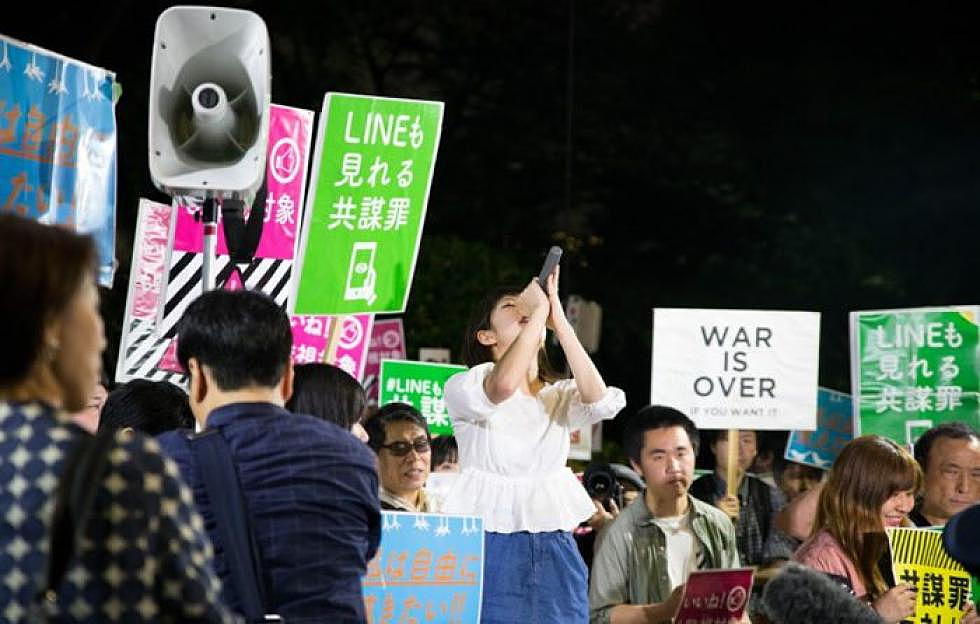
UM to Fukushima: Nuclear disaster gave Japanese activists their voice
Editor’s note: Each year, Montana Journalism Abroad gives student journalists an opportunity to hone international reporting skills through on-the-ground coverage of a timely issue. This year’s class just returned from Fukushima, Japan, where students wrote about the effects of the nuclear crisis that followed the 2011 earthquake and tsunami. In the coming days, Missoula Current will present the University of Montana students’ work. You can access their complete report online at this site. We begin by going back to the day of the disaster.
The chant “Protect our children from nuclear power plants” filled the street corners in front of the Diet, Japan’s capital building. Members of the Metropolitan Coalition Against Nukes have been coming to protest on this block for the past 247 Fridays to express their opposition to nuclear energy.
In the past, protesters have numbered in the high hundreds, but now attendance has dwindled to a couple hundred stalwarts. Most of the demonstrators are now over 50 years old, and attend the protests each week to stand in solidarity with old friends as they repeat chants of the coalition’s organizers.
These protests, and many others in Tokyo since 3.11, stem from the nuclear disaster that occurred after the Tohoku earthquake and tsunami. Before the disaster forced the evacuation of 154,000 people from rural fishing and farming communities, protesting had been exceptionally rare in contemporary Japanese culture.
Caitlin Stronell, an Australian living in Japan, said she was in Tokyo during the 3.11 disaster.
“It was a surreal experience seeing the news talk about radiation,” she said during the Friday, May 27 protest. “Activism really sparked after 3.11.”
Older protesters attending the anti-nuclear energy demonstration recall the violent Tokyo protests against the Vietnam War. The protests of that era shaped a lasting notion in Japan that protesters are violent and dishonorable people. The nuclear disaster of 3.11 redefined those long-held sentiments.
Slow government and industry responses to people’s needs cast doubt on the helpful role of institutions and created an upwelling of individuals helping each other. Social media made it easier for people to ask for help and for victims to learn they were not alone in their plight.
Anthropologist David Slater led Tokyo’s Sophia University students in interviewing survivors of the disaster for four years. Over and over he heard stories of people finding community through social media.
“This came from the experience of country people sitting in a gym together after the disaster. People were desperate for help and supplies so they sent out open calls for help using SNS,” Slater said.
Before 3.11, social media in Japan was mocked as a frivolous waste of time for social outcasts, Slater said. After the disaster, platforms such as Twitter and Facebook gave everyday people a chance to look out for one another and to share a growing sense of mistrust of government and the nuclear industry.
Slater explained that people came to believe TEPCO, the owner of the damaged power plant, had been too concerned about their profits and not concerned enough about the safety of the communities.
“This lead to contradictory information about levels of safety from radiation in the media and disrupted the assumption that companies were looking out for the whole of society,” Slater said.
The people of Fukushima felt left behind by the government, and misinformed by the media. Unexpected members of their community, such as fishermen and mothers began to stand up and speak out against nuclear energy, Slater said.
Although there's been a resurgence in Japanese protest culture, not everyone regards it as a productive form of communication.
A recent law school graduate from Kyoto, Chiharu Inoue said she opposes protests in general. Shouting, profanity and slogans are not effective ways to promote change, Chiharu said. She is not alone. Protests, since the 1960s, have been very unusual.
“I feel protesting is screaming. If you want to say beautiful words, it is OK. But ‘Fuck you, USA’ is not beautiful. To share your ideas clearly you must speak clearly,” she said.
But scholars of the Fukushima protests say social media is making it more normal for regular people to speak out, causing the stigma associated with protesting to fade.
Sophia University graduate student Chiharu Takano believes social media is making it more acceptable for individuals to voice their concerns about government and industry to each other, and to take to the streets in group protests.
“I feel like it's becoming more visible through the Internet and that helps younger generations to have more interest in protesting and demonstrations in general,” Takano said.
Next up: The nuclear meltdown next door.
